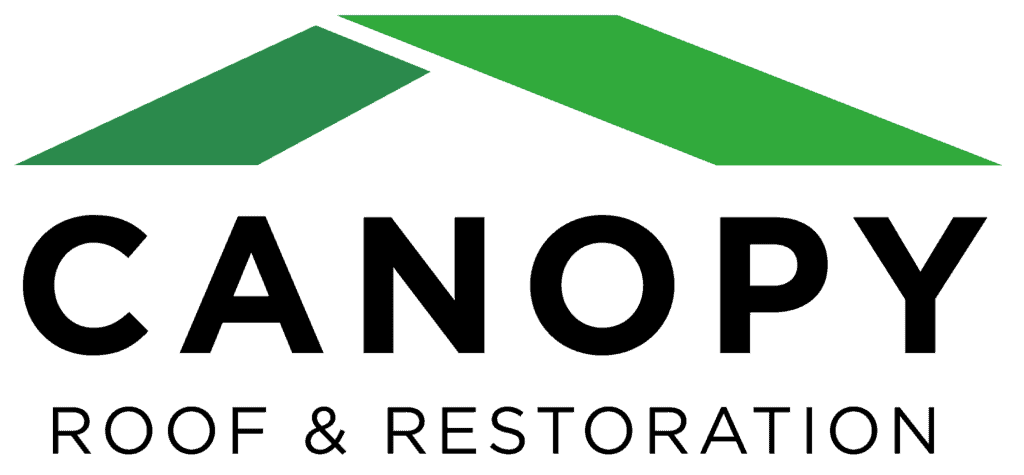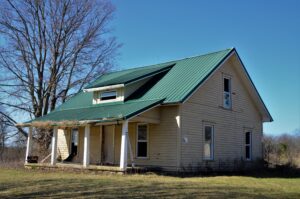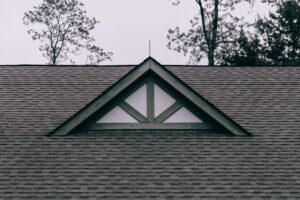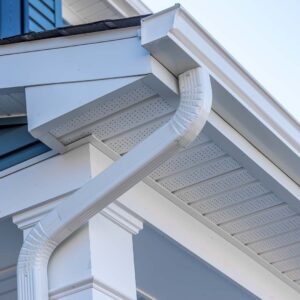As a roofing company, we’ve dealt with homeowner’s insurance companies more than most Charlotte citizens. It is important to know the details of your current policy before you end up needing it to cover a roof replacement, siding installation, or gutter replacement.
Homeowners insurance is one of the most worthwhile investments you will make when purchasing your first residence. You’ve invested a lot of time and money into the purchase of a home, and now you need insurance to safeguard it against “what if” scenarios such as fires, theft, and vandalism. There is no way to predict when a hailstorm will damage your home’s roof or when someone will trip and fall, suffering a serious injury, and you will be responsible for the resulting medical expenses. However, homeowner’s insurance protects you in these instances.
What is homeowner’s insurance, and what should you know about it?
How Homeowners Insurance Operates
Homeowners insurance provides financial protection in the event that a covered peril occurs. The majority of policies will define what is and is not covered, the dollar amount of your coverage, and any limitations or exclusions.
The majority of policies contain a number of essential components, each of which is crucial in protecting you from the numerous risks that exist today.
Structure coverage
The home itself is covered by the structure portion of homeowner’s insurance. This component of the insurance policy covers perils that affect the structure, such as a lightning-caused fire. It should cover all attached components of the residence, such as the garage. If your home has a detached garage or other outbuildings, they must be listed separately, but they must also be covered by your homeowner’s insurance policy.
Policy Contents
The contents portion of your homeowner’s insurance policy is a description of the coverage for your personal belongings or household items. Occasionally, contents coverage has a dollar limit per item. For instance, it might cover items up to $1,000 in value. If you have items of greater value, they should be listed separately in the policy. This ensures that they maintain coverage.
Liability coverage
Homeowners may be held liable for injuries that occur on their property. This type of insurance protects you and your property from claims made against you. It may include incidents such as falls that result in injuries or dog bites.
Loss of value
There are times when the structure sustains such severe damage that you cannot reside there while it is being repaired. This type of loss is covered by coverage for loss of use or additional living expenses. It may help cover the cost of renting a home while your home is being repaired, as well as meals, laundry, and other expenses related to your need to relocate during repairs. Typically, your loss of use coverage will be approximately 20% of the cost of your dwelling insurance.
Medical payments
Some types of homeowner’s insurance cover medical expenses for others. This does not protect you, the homeowner, or your family from risk. Rather, it assists in covering specific types and amounts of medical expenses.
What Does Homeowners Insurance Cover?
When purchasing home insurance, you must carefully review the policy’s specifics to determine what is covered and what is not. Consult with your insurance agent to ensure you have a thorough understanding of this, as it can affect the policy’s value and effectiveness in meeting your needs.
The following are guidelines, but policies can vary. This necessitates careful consideration of your specific policy.
What your homeowners insurance policy might cover:
- The majority of home insurance policies (referred to as HO-3 policies) will cover the following:
- Fire or lightning damage to the structure of personal property
- Damage caused by windstorms, including tornadoes and hurricanes
- Storm-related harm, such as hail damage
- Dropping objects (like tree branches striking the roof as long as it is not a maintenance issue)
- Explosions
- Unrest or civil unrest
- Smoke damage
- Theft
- Vandalism
- Damage from ice, snow, and sleet (such as from the weight of it)
- Freezing to essential home systems, such as the plumbing
Some policies are comprehensive. This means that they cover virtually all types of claims except those specifically excluded in the policy. Others are extremely specific regarding the coverage that is included, while excluding everything else.
What is not typically covered under a policy:
- Homeowners’ insurance policies typically include the following limitations on claims:
- Any damage caused by improper maintenance or normal deterioration
- Any damage caused by the property owner or residents, including vandalism
- Floors and seismic activity (this is dependent on where you live and whether you purchase a separate level of protection for these risks)
- International loss
- Earthquake-related loss
- Generalized power outage
- War-caused destruction
Typically, exclusions are specified, but you should not speculate here. For instance, if your home is flooded due to a nearby river overflowing, the resulting damages could cost you thousands of dollars. Consult with your insurance agent to ensure that your policy accurately reflects your requirements.
How Much Homeowners Insurance Is Necessary?
If you are purchasing your first home, the last thing you want to consider is something bad happening to it. However, this is a possibility for anyone. It is essential to have adequate coverage for each of the valuable areas of home insurance protection. Here are some considerations to make.
The price of rebuilding after damage
Focus on the cost of rebuilding your home when determining how much coverage to purchase. This must be carefully considered over time, as the cost of materials and labor can increase much more rapidly than many anticipate. Keep in mind that the cost to rebuild from the ground up is typically significantly higher than the market value of your home. Consult your homeowner’s insurance agent to determine how much it would cost to rebuild your home in the event of a total loss.
The amount of the deductible on your policy
The deductible on a homeowner’s insurance policy is the amount you must pay out-of-pocket in the event of a covered loss. Choose an amount that you can afford to pay in the event of a claim.
The deductible affects the premium amount. A higher deductible reduces the risk for the homeowner’s insurance company, thereby lowering your premium. A lower deductible increases the likelihood that the insurance company will have to make payments, thereby increasing the cost of coverage.
Liability
It is crucial to consult with your homeowner’s insurance agent to determine the optimal liability coverage. Determine what is prevalent in your region. Typically, this should be $300,000 or more, but it is highly dependent on the number of annual claims filed in your region.
Private property
It is prudent to record your personal property. Therefore, you must determine the value of each of your possessions. If possible, photograph the items or keep the receipts for new purchases. Personal property should be valued at the amount required to replace each item. This could exceed $100,000.
How Can You Save Money on Homeowners Insurance?
The most crucial initial step is to ensure that you have sufficient insurance to cover any type of loss that is likely to occur in your home. Discuss the risks and types of claims experienced by others in your region. That is a good starting point for determining what is required. Then, consider these cost-cutting suggestions.
- Choose a deductible that is slightly higher but still within your financial means. This can help you reduce your annual expenditures.
- Reduce your costs by installing a home security system, carbon monoxide and fire detectors, and sprinkler systems to make your home safer.
- Bundle your home insurance with other protective insurance, such as auto insurance. This can reduce total expenses.
- Numerous factors influence the price of homeowner’s insurance. This includes the following:
- The dangers in your region (if you live in a high-crime area or an area prone to flooding)
- Your credit rating (a higher score could help you qualify for a lower rate)
- If you have filed numerous insurance claims in the past, your premiums may increase.
- If you have a breed of dog known to be aggressive,
- The presence of a pool or other high-risk features on the property.
- State in which you reside Proximity to fire stations and fire hydrants
- Make improvements to your property like replacing an older roof
In order to save money on home insurance, it is essential to ensure that you have adequate coverage and that your policy covers the most likely risks you will face. Thus, the policy will be available to assist you in times of need.
Homeowners insurance is rarely an option. The majority of mortgage lenders will require you to maintain a comprehensive homeowner’s insurance policy as long as you own your home. However, even after that, it can provide you with financial security for many years.





